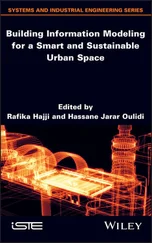Jean Sulem - Instabilities Modeling in Geomechanics
Здесь есть возможность читать онлайн «Jean Sulem - Instabilities Modeling in Geomechanics» — ознакомительный отрывок электронной книги совершенно бесплатно, а после прочтения отрывка купить полную версию. В некоторых случаях можно слушать аудио, скачать через торрент в формате fb2 и присутствует краткое содержание. Жанр: unrecognised, на английском языке. Описание произведения, (предисловие) а так же отзывы посетителей доступны на портале библиотеки ЛибКат.
- Название:Instabilities Modeling in Geomechanics
- Автор:
- Жанр:
- Год:неизвестен
- ISBN:нет данных
- Рейтинг книги:3 / 5. Голосов: 1
-
Избранное:Добавить в избранное
- Отзывы:
-
Ваша оценка:
- 60
- 1
- 2
- 3
- 4
- 5
Instabilities Modeling in Geomechanics: краткое содержание, описание и аннотация
Предлагаем к чтению аннотацию, описание, краткое содержание или предисловие (зависит от того, что написал сам автор книги «Instabilities Modeling in Geomechanics»). Если вы не нашли необходимую информацию о книге — напишите в комментариях, мы постараемся отыскать её.
Instabilities Modeling in Geomechanics — читать онлайн ознакомительный отрывок
Ниже представлен текст книги, разбитый по страницам. Система сохранения места последней прочитанной страницы, позволяет с удобством читать онлайн бесплатно книгу «Instabilities Modeling in Geomechanics», без необходимости каждый раз заново искать на чём Вы остановились. Поставьте закладку, и сможете в любой момент перейти на страницу, на которой закончили чтение.
Интервал:
Закладка:
Table of Contents
1 Cover
2 Title Page SCIENCES Mechanics, Field Director – Gilles Pijaudier-Cabot Geomechanics, Subject Head – Cino Viggiani
3 Copyright First published 2020 in Great Britain and the United States by ISTE Ltd and John Wiley & Sons, Inc. Apart from any fair dealing for the purposes of research or private study, or criticism or review, as permitted under the Copyright, Designs and Patents Act 1988, this publication may only be reproduced, stored or transmitted, in any form or by any means, with the prior permission in writing of the publishers, or in the case of reprographic reproduction in accordance with the terms and licenses issued by the CLA. Enquiries concerning reproduction outside these terms should be sent to the publishers at the undermentioned address: ISTE Ltd 27-37 St George’s Road London SW19 4EU UK www.iste.co.uk John Wiley & Sons, Inc. 111 River Street Hoboken, NJ 07030 USA www.wiley.com © ISTE Ltd 2020 The rights of Ioannis Stefanou and Jean Sulem to be identified as the authors of this work have been asserted by them in accordance with the Copyright, Designs and Patents Act 1988. Library of Congress Control Number: 2019955403 British Library Cataloguing-in-Publication Data A CIP record for this book is available from the British Library ISBN 978-1-78945-000-2 ERC code: PE1 Mathematics PE1_7 Topology PE10 Earth System Science PE10_5 Geology, tectonics, volcanology
4 Introduction
5 1 Multiphysics Role in Instabilities in Geomaterials: a Review 1 Multiphysics Role in Instabilities in Geomaterials: a Review Tomasz HUECKEL Duke University, Durham, USA Multiphysical nature is characterized by complex phenomena involved in instabilities, strain localization and bifurcation in landslides, borehole instability in nuclear waste disposal and drying cracking, as seen in situ and in the laboratory. The multiphysics includes the effect of heat generated during precursor creep in the development of landslides, as well as the effect of geochemical reactions, the effect of heat on inducing possible failure through pressurization of pore water, the effect of evaporation-induced suction and air entry during drying and subsequent cracking of soils. The phenomena illustrated with specific natural or engineered events are interpreted as scenarios of processes that are either simultaneous or sequential, and that are coupled or result from an accumulation of dissipative processes. As pointed out by Terzaghi (1950), the causes of the instabilities are often long-term phenomena, rather than single events, such as major rainfalls, which are contributing factors. The need for a proper description of these long-term phenomena and their coupling with variable mechanical properties of soil and rock is emphasized.
1.1. Introduction 1.1. Introduction The engineering practice in all branches of geomechanics is now at an interesting stage of development, when the customary tools of evaluation of the margin of safety, such as “admissible stress” and “factors of safety”, are felt to lead to an oversimplification of what we are capable of saying about a sample, soil/rock mass or structure. This is mainly because of the developed computational capabilities of contemporary engineering, as well as experimentally supported modeling capabilities, including coupled fields, through which soil and rock behavior is mathematically described. In the statement above I have adapted the words of Giulio Maier, with which he opens the foreword to a fascinating book by Davide Bigoni (2012) on bifurcation and material instabilities. While the book refers to bifurcations in a larger class of materials than just geomaterials, the above pronouncement catches the situation exactly: we can predict much more in detail than we could a few years ago: the stress field evolution, together with strain and/or damage progress along a process of loading following multiple scenarios of coupling with temperature; concentration of ions; salts or reaction progress field. It potentially includes patterns related to failure/instability and their precursors. However, how this information could/should be utilized to quantify “the distance from failure” or “factor of safety” (FOS) often remains an open question. The purpose of this chapter is to provide an overview of a series of phenomena in geomechanics which qualify as instabilities/failures of various kinds. The use of this less-than-strictly defined term is intentional, as we want to encompass the widest possible class of phenomena for which the criteria are not necessarily within a single type of definition, but which correspond in loose terms to Lyapunov’s definition: an unlimited response to a limited solicitation. Solicitation refers to a trigger of any sort: mechanical, hydraulic, thermal or chemical. We shall start with classical phenomena associated with purely mechanical loading induced instabilities and their criteria and implications to expand into an array of non-classical multiphysics instability phenomena. Current observations and understanding of geomechanical processes indicate a critical role of non-mechanical variables, whereas the conceptual base is lagging behind. Material (local) and field (global) instabilities based on the actual instability events leading to failure are both discussed.
1.2. General remarks 1.3. Solid phase material criteria 1.4. Material sample stability: experimental 1.5. Boundary value problems: uniqueness and stability at the field scale 1.6. Conclusion 1.7. References
6 2 Fundamentals of Bifurcation Theory and Stability Analysis 2.1. Introduction 2.2. Bifurcation and stability of dynamical systems 2.3. Stability of two-dimensional linear dynamical systems 2.4. Common types of bifurcations 2.5. From ODEs to PDEs 2.6. Summary 2.7. Appendix 2.8. References
7 3 Material Instability and Strain Localization Analysis 3.1. Introduction 3.2. Shear band model 3.3. Shear band formation in element tests on rock 3.4. Strain localization in fluid-saturated porous media 3.5. Conclusion 3.6. References
8 4 Experimental Investigation of the Emergence of Strain Localization in Geomaterials 4.1. Introduction 4.2. Methods 4.3. Selected materials 4.4. Strain localization in sands 4.5. Strain localization in porous rocks 4.6. Conclusion 4.7. References
9 5 Numerical Modeling of Strain Localization 5.1. Introduction 5.2. Cosserat continuum 5.3. Gradient elastoplasticity 5.4. Conclusion 5.5. Acknowledgments 5.6. References
10 6 Numerical Modeling of Bifurcation: Applications to Borehole Stability, Multilayer Buckling and Rock Bursting 6.1. Introduction 6.2. Borehole stability 6.3. Folding of elastic media as a bifurcation problem 6.4. Axial splitting and spalling 6.5. Conclusion 6.6. Acknowledgments 6.7. References
11 7 Numerical Modeling of Multiphysics Couplings and Strain Localization 7.1. Introduction 7.2. Experimental evidences of strain localization 7.3. Regularization methods 7.4. Coupled local second gradient model for microstructure saturated media 7.5. Coupled local second gradient model for an unsaturated medium 7.6. Modeling of a gallery excavation 7.7. Conclusion 7.8. References
12 8 Multiphysics Couplings and Strain Localization in Geomaterials 8.1. Introduction 8.2. Thermo-chemo-chemical couplings and stability of shear zones 8.3. Dissolution weakening and compaction banding 8.4. Conclusion 8.5. References
13 9 On the Thermo-poro-mechanics of Chemically Active Faults 9.1. Introduction 9.2. Time-independent formation of shear zones from solid mechanics 9.3. Time-dependent evolution of shear zones 9.4. Postfailure evolution of a shear zone 9.5. Comparison to field observations 9.6. Application to ETS sequences 9.7. Discussion 9.8. Appendix: poro-chemical model 9.9. References
14 10 Analysis of Instabilities in Faults 10.1. Introduction 10.2. Description of the model 10.3. Bifurcation analysis 10.4. Numerical analysis 10.5. Conclusion 10.6. Bibliography
Читать дальшеИнтервал:
Закладка:
Похожие книги на «Instabilities Modeling in Geomechanics»
Представляем Вашему вниманию похожие книги на «Instabilities Modeling in Geomechanics» списком для выбора. Мы отобрали схожую по названию и смыслу литературу в надежде предоставить читателям больше вариантов отыскать новые, интересные, ещё непрочитанные произведения.
Обсуждение, отзывы о книге «Instabilities Modeling in Geomechanics» и просто собственные мнения читателей. Оставьте ваши комментарии, напишите, что Вы думаете о произведении, его смысле или главных героях. Укажите что конкретно понравилось, а что нет, и почему Вы так считаете.












